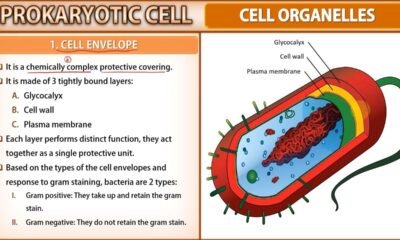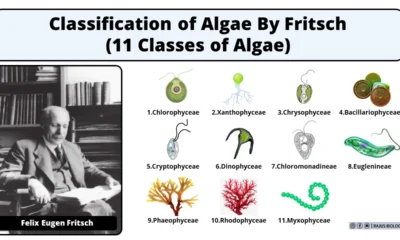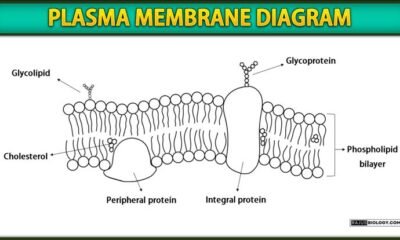Blog
Human Blood – Definition, Composition, & Functions

In this article, we will discuss the Definition of human blood, Composition of human blood & Functions of human blood
Definition of human blood
- Blood is a fluid connective tissue and it carry nutrients, oxygen, and waste products to and from cells and organs.
- It is composed of plasma, red blood cells, white blood cells, and platelets.
- Blood also contains various proteins and factors that are essential for coagulation, or blood clotting.
- The average adult has about 5 litters of blood in their body.
Composition of human blood
Human blood is mainly consisting of fluid plasma and formed elements.
Plasma
- The largest component of blood is plasma, which makes up about 55% of blood volume.
- Plasma is a yellowish liquid that is mostly contain water 90-92%.
- Fibrinogen, globulins and albumins are the major proteins are present in blood.
- Albumins: Albumins maintains the osmotic pressure of blood.
- Fibrinogen: It is made in the liver. It is one of the 13 coagulation factors that help in normal blood clotting. When blood clotting is activated. The fibrinogen circulating in the blood is converted to fibrin. The fibrin helps to form the stable clot at the site of bleeding.
- Globulins: The globulins are of 3 types alpha, beta and gamma. Alpha and beta globulins are transport proteins which transport lipid and fat-soluble vitamins. the gamma globulins are antibodies that function in immunity.
- Plasma also contains small amounts of minerals like Na+, Ca++, Mg++, HCO3–, Cl–, etc.
- Factors for coagulation or clotting of blood are also present in the plasma in an inactive form.
- Plasma without the clotting factors is called serum.
Formed Elements
Erythrocytes, leucocytes and platelets are collectively called formed elements and they constitute nearly 45 per cent of the blood.
Erythrocytes (Red Blood Cells)
- Most abundant of all types of cells in the blood.
- Red blood corpuscles are biconcave, circular and enucleated (non-nucleated) in most of the mammals and lack cell organelles. Due to absence of nucleus more haemoglobin can be filled in RBC.
- Healthy adult man has, on an average, 5 – 5.5 million of RBCs per cubic mm of blood.
- RBCs are formed in the red bone marrow in the adults. The process of erythrocyte formation is called erythropoiesis.
- RBCs contain a red coloured, iron containing complex protein called haemoglobin, hence the colour and name of these cells. 100 ml of blood of a healthy individual contains about 12-16 g of haemoglobin.
- In RBC higher cell organelles like mitochondria & Golgi complex is absent.
- RBCs have an average life span of 120 days after which they are destroyed in the spleen.
- Spleen is called the graveyard of RBCs and spleen stores excess blood corpuscles so it is called Blood Bank of body.
- An abnormal rise in RBC count is termed as polycythaemia and decrease in the number of RBCs is called erythrocytopenia.
- Haemoglobin of RBCs plays a significant role in transport of respiratory gases like O2 and CO2
2. Leucocytes (White blood cells)
- Leucocytes are the most active and motile constituents of blood.
- They are colourless due to the lack of haemoglobin.
- They are nucleated and rounded or irregular in shape.
- Leucocytes are relatively lesser in number. This varies from 6000 to 8000 per cube mm of blood
Leucocytes are generally short lived. - Rise in WBC count is termed leucocytosis. Fall in WBC count is called leukopenia.
- Leucocytes are of two main types granulocytes and agranulocytes.
i) Granulocytes
- Neutrophils (Heterophils) 60-65% Phagocytosis. Soldier of the body.
- Eosinophils (Acidphils) 2-3% Resist infections. Cause allergic reactions.
- Basophils (Cyanophils) 0.5-1% Secrete histamine, serotonin, heparin. Cause inflammatory reactions.
ii) Agranulocytes
- Monocytes (Largest WBC) 6-8% Phagocytosis
- Lymphocytes (Smallest WBC, largest nucleus) B- lymphocytes & T- lymphocytes 20-25% Immune responses of the body. Secrete antibodies.
3. Thrombocytes (Blood platelets)
- They are flat & non-nucleated fragments. They are derived from megakaryocyte cells of bone marrow.
- Formation of thrombocytes is called thrombopoiesis. The normal life span is about a week.
- Thrombocytes are fewer than the RBCs and more than the WBCs in number. There are about 1,50,000-3,50,000 platelets per cubic mm of the blood.
- Platelets can release a variety of substances called platelet factors most of which are involved in the coagulation of blood.
- Decrease in number of blood platelets is called Thrombocytopenia.
Functions of human blood
- Transportation: Blood transports essential nutrients, oxygen, and hormones to the body’s cells and organs. It also removes waste products, such as carbon dioxide and urea, from the body.
- Protection: Blood contains white blood cells that are part of the immune system, helping to protect the body from infections and diseases. It also contains antibodies, which are proteins that help identify and neutralize foreign substances in the body.
- Clotting: When a blood vessel is damaged, blood platelets work with various proteins to form a clot, which seals the damaged area and prevents further bleeding.
- Regulation: Blood helps to regulate body temperature by redistributing heat from the body’s core to its extremities. It also helps to maintain the body’s pH balance by transporting acids and bases to the lungs and kidneys for removal.
- Hormone transportation: Blood carries hormones and other signalling molecules throughout the body, allowing them to reach their target organs and tissues.
- Homeostasis: Blood helps to maintain the body’s internal environment, keeping it in a state of balance, or homeostasis.

 Blog7 months ago
Blog7 months ago[PPT] Human Reproduction Class 12 Notes
- Blog7 months ago
Contribution of Indian Phycologists (4 Famous Algologist)
- Blog7 months ago
PG TRB Botany Study Material PDF Free Download

 Blog7 months ago
Blog7 months agoCell The Unit of Life Complete Notes | Class 11 & NEET Free Notes

 Blog7 months ago
Blog7 months ago[PPT] The living world Class 11 Notes

 Blog7 months ago
Blog7 months agoClassification of Algae By Fritsch (11 Classes of Algae)

 Blog7 months ago
Blog7 months agoJulus General Characteristics | Free Biology Notes

 Blog7 months ago
Blog7 months agoPlasma Membrane Structure and Functions | Free Biology Notes














